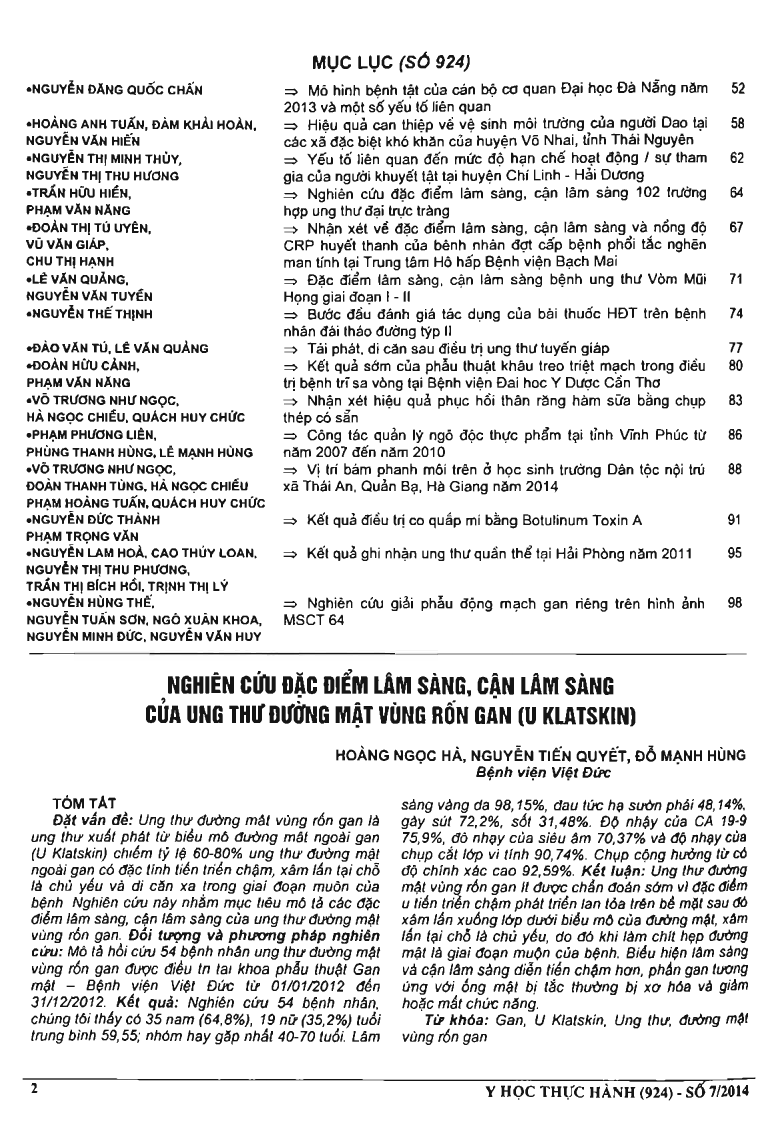
Background: liver bile duct navel cancer is derived from extrahepatic biliary epithelium (Klatskin's tumor). It's account 60-80 percent of extrahepatic cholangiocarcinoma. It is slow develop, local invasion and distant metastasis in the later stages of the disease. This study aims to describe the clinical and laboratory characteristics of the liver cord cholangiocarcinoma. Subjects and Methods: Retrospective description of 54 patients suffered from liver cord cholangiocarcinoma treated in Hepatobiliary Surgery department, Viet-Duc Hospital from 01/01/2012 to 31/12/2012. Results: 54 patients were investigated, it's include 35 male (64.8 percent), 19 women (35.2 percent), mean age 59.55; most patients were 40-70 years old. 98.15 percent of patients have jaundice, right upper quadrant pain is 48. 14 percent, 72.2 percent weight loss, fever 31.48 percent. CA 19-9 sensitivity is 75.9 percent, sensitivity ultrasound is 70.37 percent and sensitivity of computerized tomography is 90.74 percent; Magnetic resonance with 92.59 percent accuracy. Conclusion: patients with liver bile ducts navel cancer usually were diagnosis very late because this tumor develop slowly on the surface of epithelial. When the tumor biger, it's invade underlying biliary epithelial. So when the tumor invasive to the nearby tissue, it mean patients in the late stage of the disease. The progress of disease is slowly, corresponding to the liver bile ducts is often blocked or reduced fibrosis and loss of function.
- Đăng nhập để gửi ý kiến
